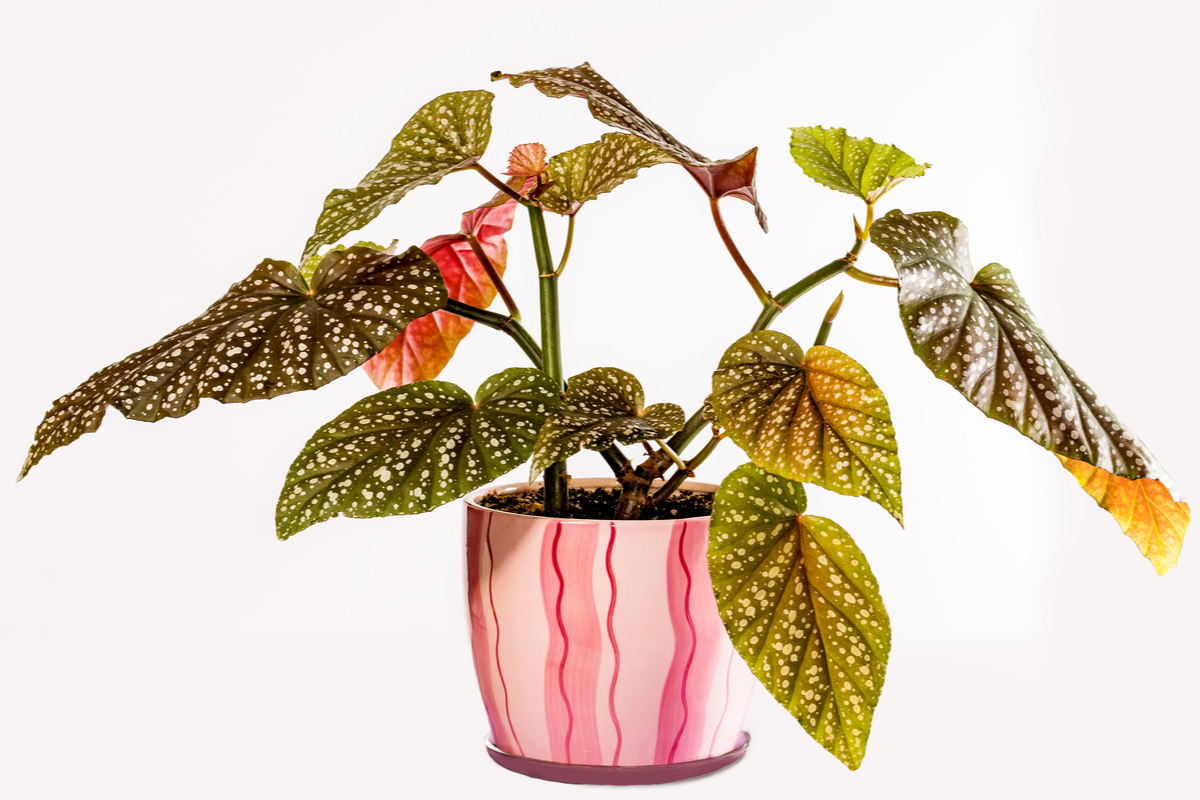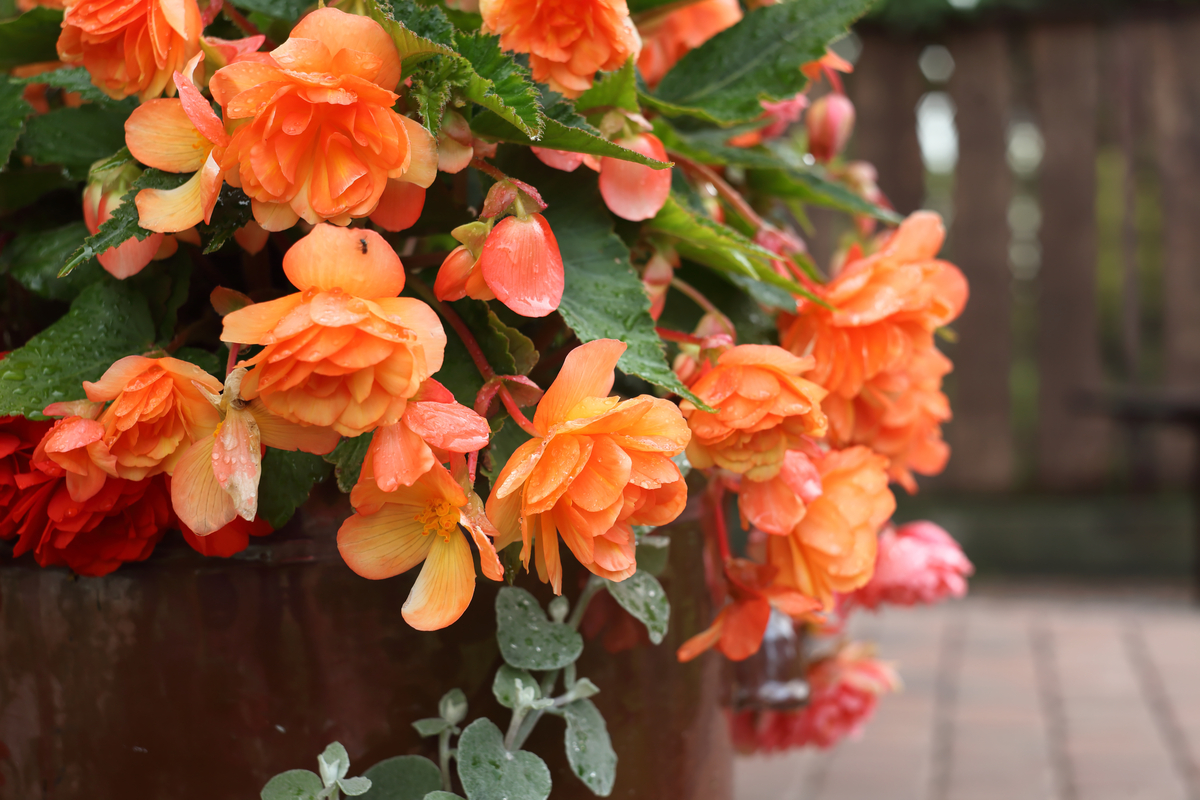Begonias, which are native to tropical and subtropical regions, are often found as houseplants and outdoor garden plants in shaded areas. They’re often on the smaller side, but come in an array of asymmetrical, variegated foliage that makes them a unique, coveted plant. Like all plants, the different varieties of begonias have different characteristics and care needs, so you’ll want to research your specific variety to find out things like how often you should be watering your begonia. We’ll detail some general guidelines, but remember that each plant is unique.

Choosing a begonia variety
One of the most common varieties of begonias that are often seen in shaded garden beds is the wax begonia. They’re very colorful, which is why gardeners will often opt to put them in shaded areas to liven up the space. They reach about 6 to 12 inches tall (and wide), and are a great plant for growing in hanging baskets if you’re interested in having a hanging plant in your home.
Tuberous begonias can grow beautiful flowers and are another popular variety. As with the wax begonias, they can be grown in hanging baskets, but they get a little bit larger — around 12 to 18 inches as houseplants.
The biggest variety of begonias is the rhizomatous begonia. The rhizomatous is often grown more as a houseplant, but it has a more unpredictable size; they can be anywhere from a few inches to 3 feet tall. Their thick stems grow horizontally at the surface of the soil, sprouting new roots and leaves.
Rex begonias are possibly the most finicky variety of begonia, even though they’re popular as a houseplant. Like the tuberous begonia, they grow from anywhere between 12 and 18 inches. Rex begonias can often be found year-round at local garden centers and nurseries.
Cane begonias have a size that varies greatly depending on growing condition. They can be 6 to 12-inch houseplants, or even grow into a more bush-like plant that’s 5 feet tall. Gardeners love them for their asymmetrical, wing-shaped leaves, and their foliage and blooms come in a variety of colors.
Caring for your begonias
Although there can be some challenges, many begonias will do quite well indoors as long as you’re mindful of its care. As mentioned earlier, each begonia variety will have slightly different needs, so you’ll want to research your individual one when trying to provide the best possible care. Most begonias prefer to be root-bound as opposed to given a lot of space. When you’re potting your begonia, make sure the container isn’t too big, has good drainage, and that you’re using a well-draining soil.
Overwatering is one of the most common ways to kill a begonia. They like to slightly dry out in between watering, so make sure the first inch or so of soil is dry before watering again. A begonia with drooping, yellowed leaves is likely being overwatered, while one with brown leaves is likely being underwatered. As far as light, most begonias prefer bright, indirect lighting, so an east-, west-, or south-facing window would be best. If you don’t have that as an option, you can always filter the light through a curtain to create a good environment.

Encouraging your begonia to bloom
There’s no way to guarantee a plant will bloom. So, the best way to encourage your begonia to flower will be to follow the variety’s specific care tips as best as possible. You can use these tips as some general guidelines, but keep in mind that each begonia type will have its own needs and thus different conditions that will help encourage blooming.
Along with properly watering a begonia, you can place it on a tray of pebbles and water to increase the humidity. Since begonias are native to tropical/subtropical regions, added humidity will help duplicate their natural habitat and encourage optimal growth and blooming. You can also opt to use a balanced fertilizer (one that contains the basic nutrients for plants, like a 10-10-10 fertilizer
All in all, begonias are very straightforward houseplants to care for. As long as you meet their needs, which aren’t one-size-fits-all, you’ll have good luck in growing a strong begonia. Remember that a blooming plant is never guaranteed, and you may have more flowers some seasons than others. Just do your best, keep them happy, and you’ll have a good chance at an indoor flowering begonia!


